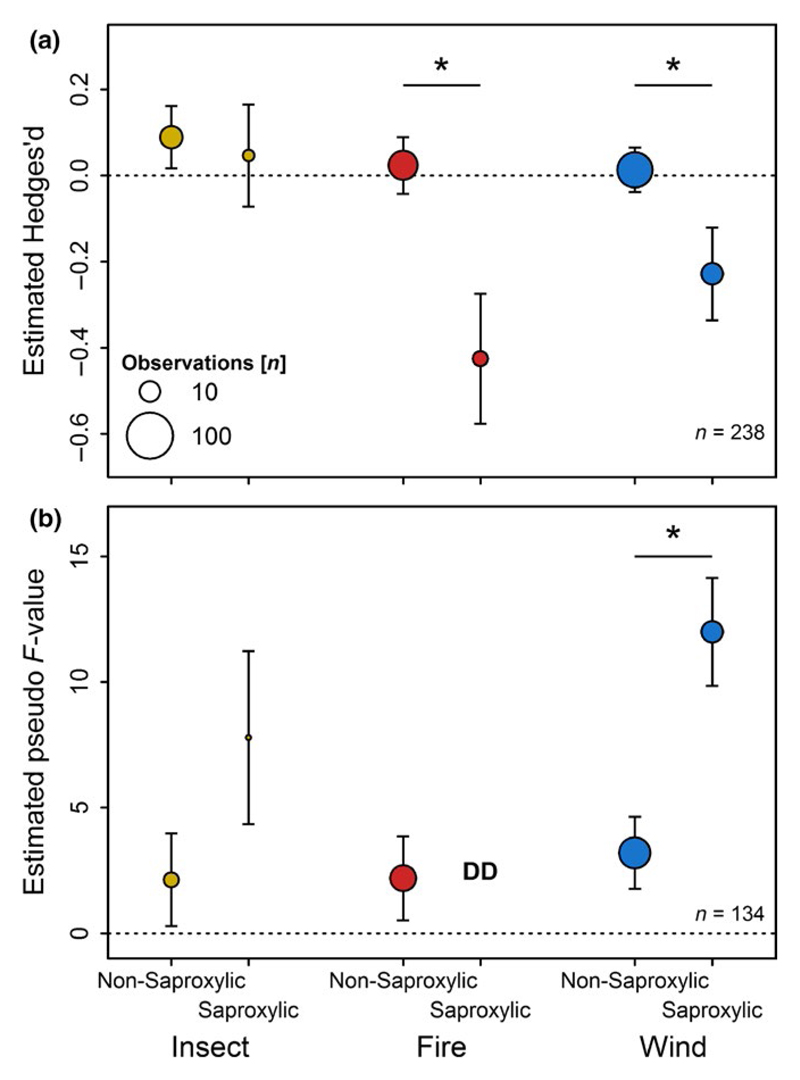Figure 4.
(a) Estimated response and corresponding standard error of saproxylic and non-saproxylic taxa to salvage logging based on 238 individual comparisons (based on Hedges’ d) of numbers of species in burned, storm- and insect-affected forests. Negative estimates correspond to a decrease in numbers of species by salvage logging (Table S3). (b) Estimated response and corresponding standard error of community composition of saproxylic and non-saproxylic taxa based on pseudo F-values of permutational multivariate analysis of variance obtained from 134 individual species abundance matrices. Increasing F-values correspond to larger changes in community composition induced by salvage logging (Table S4). Note, insufficient data (DD) were available for saproxylic taxa in burned forests. Asterisks above dots indicate significant differences in the responses between saproxylic and non-saproxylic taxa within each disturbance type. Number of underlying data points is indicated by the size of the circles, with 10 and 100 size shown for reference.

